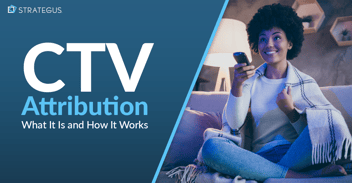- Home
- Strategus Blog
- Hyperlocal Geo-fencing: Placing a Mobile Ad Exactly Where You Want It
Hyperlocal Geo-fencing: Placing a Mobile Ad Exactly Where You Want It
 Andy Dixon
Andy Dixon
2 minutes read

In a perfect world, your mobile banner ads would display only when your most likely customer is in the right place at the right time. That’s the basic promise of geo-fencing; however, not everything that is called geo-fencing actually delivers on that promise.
Let’s start with a basic definition: Geo-fencing is a technology that defines a virtual boundary around a real-world geographical area like a shopping mall or car dealership. But buyers beware: not all geo-fencing campaigns are created equal. Many advertisers will say they are using geo-fencing when they are merely targeting an entire zip code hoping to hit as many mobile devices associated with that location.
The flaws in this approach are many, including geo-fencing wannabes that rely on inferior data such as IP addresses, cell tower triangulation or Wi-Fi signal strength that are not as accurate as GPS coordinates. Unless your mobile ad campaign uses GPS coordinates derived from your target’s mobile device, your campaign could miss the mark completely.
Enter the phrase “hyperlocal geo-fencing.” This is a location-based mobile service that uses precise GPS coordinates to target banner ads to any mobile, Internet-connected device, both “in app” and during a web browsing session. This is the most accurate data available and is the best source for precision targeting.
Let’s say you want to target individuals with an interest in duck hunting who happen to be within a few hundred meters of your outdoor sporting goods store during a weekend sale. Hyperlocal geo-fencing serves your ad to any mobile device within your predetermined geofence. The ad will display as long as the user is connected to and actively using the Internet.
Hyperlocal geo-fencing can also be deployed to win the attention of customers as they shop the competition. Conquest campaigns, as they are called, use the GPS coordinates of your competitors so that you can promote your product or service to mobile devices that enter your competitor’s space.
Once you’re ready to start your hyperlocal geo-fencing campaign, remember these tips:
- Connect with a digital agency and verify that the data being used is from GPS coordinates
- Understand campaign goals and use them to pick specific locations to target
- Consider specific creative and messaging that is relevant to the locations
- Monitor the campaigns and optimize for best performance
- Make sure KPIs are being monitored and also onsite analytics
- Use all the data to continue to improve performance throughout the life of the campaign
Geo-fencing can be a highly effective digital marketing tool and is worth adding to a digital media strategy. By utilizing GPS coordinates to target consumers, a geo-fencing campaign becomes hyperlocal and much more effective at reaching the right audience, at the right time and in the right location.

Andy Dixon is a seasoned Content Writing Specialist at Strategus, renowned for his expertise in creating engaging and impactful digital content. With over a decade of experience in content creation, Andy has honed his skills in a variety of niches, ranging from technology and marketing to education.
Strategus is a managed services connected TV(CTV) advertising agency with over 60,000+ campaigns delivered. Find out how our experts can extend your team and drive the result that matter most.
Talk to an Expert
Seeking a Custom CTV Strategy That Delivers?
What to read next

Third-Party Data Targeting for CTV: Benefits & Tactics
Third-party data. It’s a term that’s thrown around, and yet few take the time to detail its pros and cons — much less strategies for using...
7 minutes read

First-Party Data Targeting: Benefits and Tactics for CTV Advertising
First-party data is the information that companies collect directly from their customers rather than through intermediaries. Advertisers use this...
10 minutes read

Foot-Traffic Attribution: Tying Ad Impressions to In-Store Visits
The marketing funnel has changed. Today’s shoppers often begin researching products from the comfort of their homes and don’t set foot into a store...
8 minutes read

CTV Attribution: What It Is and How It Works
Connected TV (CTV) viewing is on the rise — and that’s good news for marketers. Not only can CTV ads be precisely targeted to individual households,...
9 minutes read















